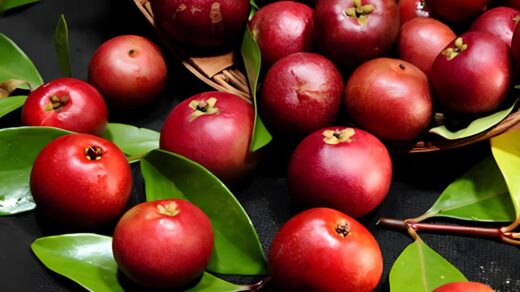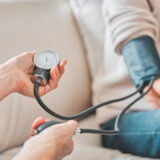The Pancha Mahabhutas: How Food Influences Your Dosha
In the ancient system of Ayurveda, food is much more than just nourishment for the body; it is a tool for maintaining harmony and balance within the body and mind. Ayurveda teaches that the universe, including human beings, is made up of five primary elements, known as the Pancha Mahabhutas.
These elements play a significant role in shaping your health and well-being. By understanding the influence of these elements and how they interact with your unique dosha (Vata, Pitta, Kapha), you can make more conscious choices about what you eat to restore or maintain balance.
What Are the Pancha Mahabhutas?
The Pancha Mahabhutas are the five elements that govern all life in the universe, both physically and metaphysically. Each element has specific characteristics, and when they combine in different proportions, they shape the world around us, including our bodies and minds.
1. Aakash (Ether): The element of space or void, Aakash is the foundation of all things. It governs the expansiveness, openness, and freedom in the body and mind. It is subtle, light, and expansive, allowing for communication, movement, and breath.
2. Vayu (Air): The element of movement, air governs everything that moves — from the wind to our breath. It represents the mental and physical forces of mobility, agility, and change. It also governs the nervous system and the flow of energy in the body.
3. Agni (Fire): Agni is the element of transformation, heat, and metabolism. It governs the processes of digestion, absorption, and transformation in both the physical and mental planes. Agni is the driving force behind metabolism, mental clarity, and insight.
4. Jala (Water): The element of water is fluid, adaptable, and nourishing. Water governs all forms of moisture in the body, including blood, lymph, and other bodily fluids. It also represents emotions, intuition, and creativity. Jala is the element that cools and moistens, ensuring flexibility in the body and the mind.
5. Prithvi (Earth): The element of earth is solid, stable, and grounded. It represents the structure and support of all physical forms, including bones, muscles, and tissues. Earth provides stability, nourishment, and grounding to the body and mind.
These five elements are not static but rather in a constant state of interaction and transformation. The qualities of these elements influence everything, from the physical properties of food to the behavior of individuals, the climate, and the seasons.
How the Pancha Mahabhutas Influence Food and Health
In Ayurveda, food is a powerful tool for balancing the energies of the Pancha Mahabhutas within the body. Each food item has its own inherent qualities, including its taste (rasa), temperature (virya), and post-digestive effect (vipak), all of which correspond to one or more of the five elements.
1. Flavors (Rasa): The six primary tastes in Ayurveda — sweet, salty, sour, bitter, astringent, and pungent (spicy) — each have a corresponding elemental influence. For example:
- Sweet (earth and water) nourishes and grounds the body, making it perfect for calming excess air (Vata) and fire (Pitta).
- Salty (fire and water) helps stimulate digestion and brings warmth, but when over-consumed, it can aggravate Pitta.
- Sour (fire and earth) stimulates the digestive fire (Agni) but can also increase acidity, which may aggravate Pitta.
- Bitter (air and ether) has cooling and detoxifying properties, making it beneficial for reducing excess heat and moisture.
- Astringent (earth and air) dries and tightens, balancing excess moisture or water in the body.
- Spicy (fire and air) stimulates digestion, boosts circulation, and has a warming effect on the body, but it can exacerbate heat in Pitta types.
2. Temperature of Foods (Virya): In addition to taste, the temperature of food — whether hot or cold — is another critical factor in Ayurvedic nutrition. Foods that are hot (like spicy foods, fried foods, and coffee) can increase Pitta, while foods that are cold (such as dairy, cucumbers, and melons) can cool down excess Pitta. On the other hand, foods that are warm and moist (such as soups, stews, and warm grains) help balance Vata.
3. Post-Digestive Effects (Vipak): After food is digested, it continues to affect the body. This is known as the post-digestive effect or Vipak. For example, sweet foods tend to have a calming and grounding effect, whereas spicy foods may have a stimulating, warming effect after digestion. Understanding Vipak helps tailor diets to not only address immediate cravings or desires but also their long-term impact on your health.
The Doshas and Their Relationship with the Pancha Mahabhutas
Each individual has a unique constitution made up of varying proportions of the three doshas: Vata, Pitta, and Kapha. These doshas are influenced by the Pancha Mahabhutas, and understanding your dosha is key to selecting the right foods that promote balance.
1. Vata Dosha: The Air and Ether Elements
Vata is characterized by lightness, dryness, and movement, as it is predominantly composed of air and ether. People with a Vata constitution tend to be thin, energetic, creative, and quick-moving but can easily become ungrounded or anxious.
- Recommended Flavors: Sweet, salty, and sour flavors are ideal for balancing Vata. These tastes help to ground, nourish, and hydrate the body.
- Avoid: Bitter and astringent flavors should be minimized, as they can exacerbate Vata’s inherent dryness and coldness.
- Dietary Suggestions: Warm, moist, and grounding foods such as soups, stews, boiled cereals, and root vegetables are ideal for Vata types. Ginger and cinnamon are excellent spices to stimulate digestion, while tofu, ghee, and dairy help to provide nourishment and hydration.
2. Pitta Dosha: The Fire and Water Elements
Pitta is fiery, intense, and focused, composed primarily of fire and water. Pitta types tend to have a medium build, sharp intellect, and a strong digestive system but can suffer from heat-related imbalances such as inflammation, acidity, or irritability.
- Recommended Flavors: Bitter, sweet, and astringent flavors are best for balancing Pitta. These flavors help cool the body and calm the fiery nature of Pitta.
- Avoid: Sour, salty, and spicy flavors can increase the heat of Pitta and lead to digestive issues, rashes, or inflammation.
- Dietary Suggestions: Cooling foods like cucumber, coconut, and leafy greens are excellent for Pitta types. Dairy products, especially ghee, are soothing to the digestive system, and herbal teas with mint or chamomile can also help cool the body and mind.
3. Kapha Dosha: The Water and Earth Elements
Kapha is steady, stable, and nurturing, composed of water and earth. People with a Kapha constitution are generally strong, solid, and grounded but may struggle with lethargy, weight gain, or sluggish digestion.
- Recommended Flavors: Spicy, bitter, and astringent flavors are best for Kapha, as they help to stimulate the metabolism and reduce the excess moisture and heaviness associated with this dosha.
- Avoid: Sweet, oily, and fatty foods, which can lead to increased congestion, weight gain, and sluggish digestion in Kapha types.
- Dietary Suggestions: Foods that are light, dry, and stimulating, such as quinoa, barley, and fresh vegetables, are ideal for Kapha types. Spices like ginger, cayenne pepper, and black pepper help stimulate the digestive fire (Agni), while light, non-dairy alternatives are best for this constitution.
Balancing the Doshas Through Seasonal Eating
In Ayurveda, food choices should not only be based on your dosha but also the current season. Each season has its own predominant elements, and adjusting your diet to match the season helps keep your dosha in balance.
- Winter (Vata Season): Winter, which is cool, dry, and windy, aggravates Vata, so foods that are warm, moist, and grounding — such as hearty soups, stews, root vegetables, and dairy — are ideal for this season.
- Summer (Pitta Season): The intense heat of summer aggravates Pitta, so cooling foods like fresh fruits, vegetables, coconut water, and mint teas are recommended to calm the heat and prevent excess inflammation.
- Spring (Kapha Season): Spring, with its wet and heavy qualities, can exacerbate Kapha. Foods that are light, dry, and stimulating, such as leafy greens, beans, and spices like ginger, are perfect for the spring season.
FAQ’s
1. What is the relationship between Panchamahabhuta and dosha?
The Panchamahabhutas (five elements) influence the three doshas — Vata, Pitta, and Kapha — shaping an individual’s physical and mental traits based on the elements present in their body.
2. What is the food of Panchamahabhuta?
Foods are classified by the qualities of the five elements, with each element influencing specific tastes or rasas that affect your dosha and balance.
3. What is the theory of Panchamahabhuta?
The theory states that everything in the universe is composed of five elements (ether, air, fire, water, and earth), which shape the physical and mental world.
4. Which dosha is composed of air and ether elements?
Vata dosha is primarily composed of air and ether, characterized by qualities like lightness, dryness, and mobility.
5. How do you balance each dosha?
To balance doshas, eat foods that counteract your dosha’s imbalance, such as warming foods for Vata, cooling foods for Pitta, and light foods for Kapha.
6. What is the connection between Pancha Mahabhutas & sense organs?
Each element corresponds to a sense organ: ether with hearing, air with touch, fire with sight, water with taste, and earth with smell.
7. What determines your dosha?
Your dosha is determined by your genetic makeup, environmental influences, lifestyle, and diet, which shape your unique constitution.
8. What is the relationship between dhatu and Panchamahabhuta?
The dhatus (tissues) of the body are linked to the Panchamahabhutas, with each tissue being nourished by a specific combination of elements.
9. What is the relationship between Gunas and doshas?
The Gunas (Sattva, Rajas, Tamas) influence the doshas, with each dosha reflecting a particular balance of the gunas in the body and mind.
10. What is the relationship between Triguna and Panchamahabhuta?
The Triguna (mental qualities) and Panchamahabhutas (elements) are interconnected, affecting both the mind and body’s balance, with each dosha showing different guna characteristics.
11. Can you be a combination of doshas?
Yes, most people have a combination of doshas (e.g., Vata-Pitta), which influences their unique physical and mental characteristics.
12. What is the relationship between dosa and rasa?
Rasa (taste) affects the doshas by balancing their qualities, with each taste helping to soothe or aggravate the doshas depending on the individual’s constitution.
Food in Ayurveda is not one-size-fits-all; it must be tailored to the individual’s dosha, the season, and the person’s current state of health. By aligning your diet with the principles of the Pancha Mahabhutas and your dosha, you can maintain balance, prevent illness, and promote long-term health.

























